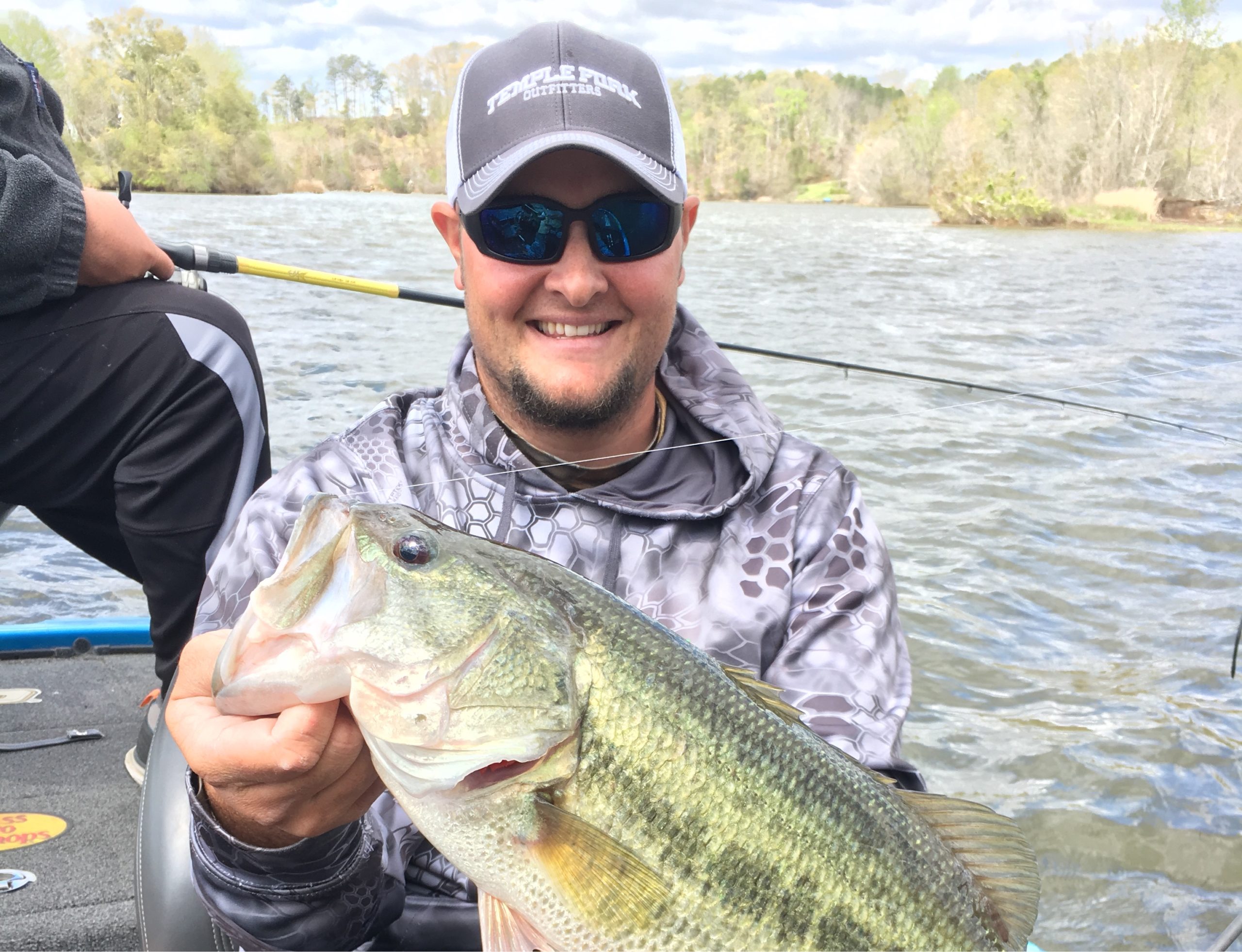Depending on where you live, winter is almost over. The spring thaw has started, which means it’s time for spawning bass. Temple Fork Outfitters ambassador Joey Nania shared a handful of tips with TFO blog editor Mike Hodge on how to fish the spawn, so you’ll be prepared to catch a big bucketmouth.
Spring Time is Prime Time
“Spawning bass is all about spring. And there’s a couple key factors that have to mix properly to get the fish where they will spawn. One of the keys is water temperature. It depends on where you live. For instance in Florida the fish can be finicky and they come up when the the water’s warmer. Some bass will spawn when the water is in the 58-degree range. The magic number is 60 degrees. The bass are going to spawn on either a full or new moon when the water temperature reaches the 60, 70-degree range, anywhere in that range. That’s when it all starts. They will be in pre spawn and staging before that. When the water warms up and you get the moon phase, that’s when they really go. They start fanning and doing their business.”
Shallow Water and Structure
“There’s a big difference between largemouth spawn and where smallmouth and spotted bass spawn. Largemouth spawn in shallow pockets and in shallow flats. They liked to be protected and tucked up against some structure like a dock or laydown tree or a hole in the grass bed in four feet or less. So you want to be shallow in a flat area like a pocket or a super shallow creek flat near structure. Stumps are good. Next to a dock, something that they can get next to — for protection.
Don’t Forget About the Other Species
“Spotted bass and smallmouth spawn similarly. They’re going to spawn on flats and points and rocky, gravel structures, where largemouth are more on pockets. Flats, humps, any shallow spot four feet or less, that’s where spots and smallmouth will spawn — and more in open water. It’s not going to be protected as much. It could be on a flat in the middle of a creek.”
Strategy and Tools of the Trade
“With the smallmouth and the spots, a lot of times you can’t see them. They spawn on the more open-water structures. My favorite (setup) for catching those species when you’re blindcasting, where you think they’re spawning and you’re picking off areas, I like to use a TFO Pacemaker, 6-10 medium with 20-pound braid to a 10-pound fluorocarbon leader. A Carolina Rig with a 3-foot leader is a little trick also for blindcasting on the flats on the open-water beds. I like to fish a lizard or a Fluke on the back of it.”
Patience is Virtue
“It’s all about presenting it slow. One of the most important things is when you see a piece of structure that looks right, when you throw that bait, you want to wait, three to five seconds before you ever move it. After that, give the bait little small movements until you’re out of the strike zone. Fishing it slow is really important. Sometimes if one is bedding there, it might take multiple casts, even if you can’t see them.”
Sight Fishing Strategy
“You have to find the fish first and having a good pair of polarized glasses is very important for that. Once you’ve found them, you want to use little craw baits, Texas-rigged soft-plastic crawdad baits. Those tend to make them mad. The Shaky Head also works good for that.”
Minimizing Expectations and Playing the Game
“This is important. Every bass you find on the bed is different. One of the biggest keys is to be able to see the fish and how it’s moving, what it’s doing and to tell if the fish is catchable or not. Some fish are easy to catch and some bed fish are very difficult to catch. If you keep hunting for those easy-to-catch ones, you can normally find enough to have a productive day and catch some good, quality fish. You’re looking for ones that are easy to catch. If it’s a giant, I’ve worked fish up to an hour before I got them to bite. If it’s a big fish and if you’ve got an hour to spend, that’s not a bad idea. The key is if the fish leaves and doesn’t come back for maybe three to five minutes, it doesn’t care that you’re there. If it leaves and comes (right) back, then you know have a catchable fish. Pay attention to the signs. If they start looking up at the bait, and once they start turning up, all it takes is a little pop. Understanding the mood of the fish is important. It can be frustrating at times.”
Any more tips on spawning bass? Feel free to comment. Next week, we’ll look at how to catch spawning bass on fly.







